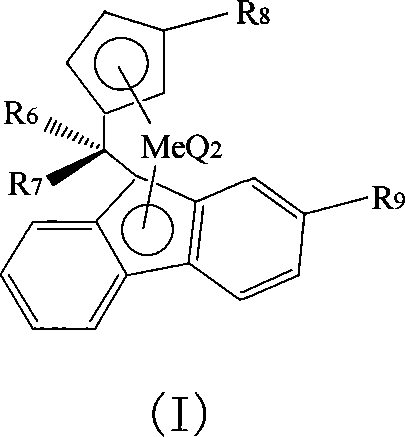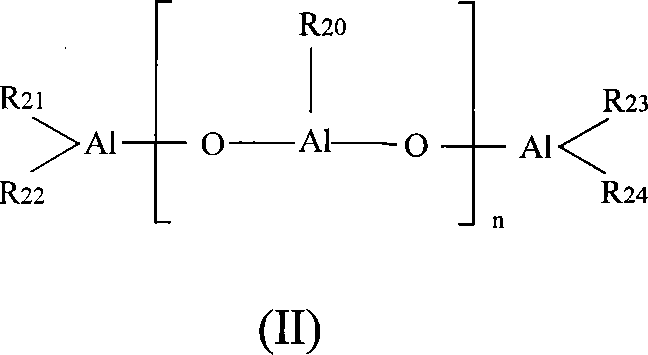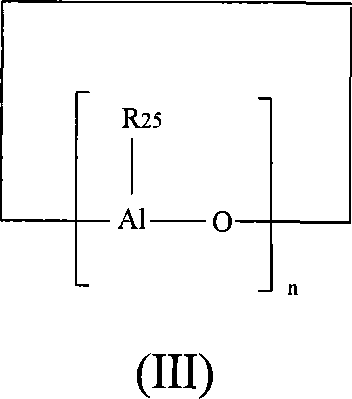Catalytic system for preparing cycloolefine copolymer
A technology of cycloolefin copolymers and catalytic systems, applied in the field of catalytic systems, can solve the problems of limiting the heat resistance of cycloolefin copolymers, affecting the effective utilization rate of cycloolefin monomers, and the low insertion rate of cycloolefin monomers, etc., to achieve effective Effect of increased utilization rate, improved insertion rate, and improved heat resistance
- Summary
- Abstract
- Description
- Claims
- Application Information
AI Technical Summary
Problems solved by technology
Method used
Image
Examples
Embodiment 1
[0033] Dissolve 3.6 g of refined norbornene in 50 ml of refined toluene to form solution I. Solution I was added to a 100 ml Schlenk tube reactor previously flushed with nitrogen, and ethylene was pumped (1 atm) several times to saturate the solution with ethylene. Then 2 ml of a toluene solution of methylaluminoxane with a concentration of 1.72 mol / liter and 1.3 mg of isopropyl-(fluorenyl)-(cyclopentadienyl)zirconium dichloride were added successively. Polymerization was carried out at 50° C. and stirring at 250 r / min for 1 hour; during the polymerization process, ethylene was supplemented and metered, and the pressure was controlled at 1 atmosphere. After the reaction, the reaction solution was poured into ethanol for precipitation and filtered, and the filter cake was washed with ethanol and dried. The catalyst activity was 1.2×10 6 g / (mole zirconium·hour). The physical properties of the polymers are listed in Table 1.
Embodiment 2
[0035] Polymer is prepared by the method of embodiment 1, and the addition of refined norbornene is reduced to 0.7 gram by 3.6 gram, and catalyst activity 1.5 * 10 6 g / (mole zirconium·hour). The physical properties of the polymers are listed in Table 1.
Embodiment 3
[0037] The polymer is prepared by the method of Example 1, and the addition of refined norbornene rises to 5.4 grams from 3.6 grams, and the catalyst activity is 1.0×10 6 g / (mole zirconium·hour). The physical properties of the polymers are listed in Table 1.
PUM
 Login to View More
Login to View More Abstract
Description
Claims
Application Information
 Login to View More
Login to View More - R&D
- Intellectual Property
- Life Sciences
- Materials
- Tech Scout
- Unparalleled Data Quality
- Higher Quality Content
- 60% Fewer Hallucinations
Browse by: Latest US Patents, China's latest patents, Technical Efficacy Thesaurus, Application Domain, Technology Topic, Popular Technical Reports.
© 2025 PatSnap. All rights reserved.Legal|Privacy policy|Modern Slavery Act Transparency Statement|Sitemap|About US| Contact US: help@patsnap.com



